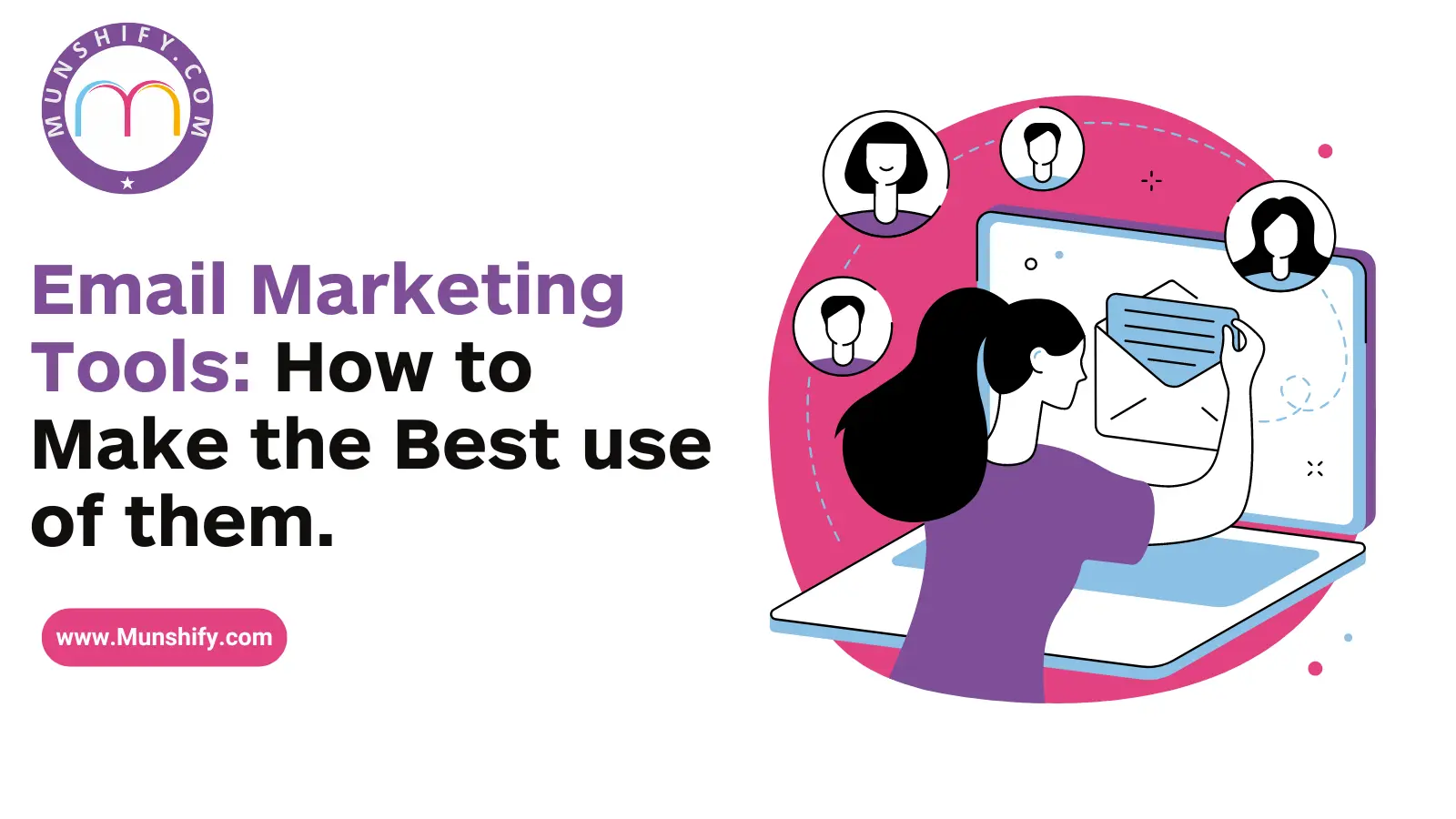In today’s digital age, email marketing remains one of the most effective ways to reach and engage with your audience. Despite the rise of social media and other marketing channels, Email Marketing Tools have proven their worth time and time again. They offer businesses the ability to connect with customers on a personal level, drive conversions, and boost overall marketing ROI. But how can you make the best use of these tools? This blog will explore the core features, best practices, and strategies for maximizing the ROI of your email marketing efforts, while also highlighting common mistakes to avoid.
Understanding the Core Features of Email Marketing Tools
Before diving into the best practices, it’s crucial to understand what makes email marketing tools so powerful. These tools come equipped with a variety of features designed to streamline your marketing efforts and ensure your messages reach the right audience.
- Email List Management: One of the most fundamental features of any email marketing tool is the ability to manage your email lists effectively. This includes segmenting your audience based on demographics, behavior, or preferences, allowing you to send targeted and relevant content.
- Automation: Automation is a game-changer in email marketing. It enables you to set up workflows that automatically send emails based on specific triggers, such as a customer’s birthday, a recent purchase, or a sign-up. This not only saves time but also ensures timely communication with your audience.
- Personalization: Personalization features allow you to tailor your emails to individual recipients. By using data such as the recipient’s name, purchase history, or browsing behavior, you can create personalized content that resonates with your audience and increases engagement.
- Analytics and Reporting: To make informed decisions, you need to know how your emails are performing. Email Marketing Platforms provide detailed analytics and reporting features, offering insights into open rates, click-through rates, conversion rates, and more. This data is invaluable for refining your strategy.
- A/B Testing: A/B testing allows you to experiment with different email elements, such as subject lines, images, or call-to-action buttons. By testing variations and analyzing the results, you can optimize your emails for better performance.
Best Practices for Using Email Marketing Tools
Now that we’ve covered the core features, let’s delve into some best practices for using email marketing tools to their fullest potential.
- Segment Your Audience: One of the most effective ways to boost your email marketing success is by segmenting your audience. By dividing your email list into smaller, more targeted groups, you can send tailored messages that resonate with specific segments. This leads to higher engagement rates and a better overall experience for your subscribers.
- Focus on Quality Content: The content of your emails is what will ultimately drive results. Ensure that your emails provide value to your audience, whether it’s through informative content, exclusive offers, or engaging stories. Remember, quality trumps quantity every time.
- Leverage Automation: Automation is key to scaling your email marketing efforts. Set up automated workflows for welcome emails, abandoned cart reminders, post-purchase follow-ups, and more. This not only saves time but also ensures consistent communication with your audience.
- Test and Optimize: Use the A/B testing feature of your email marketing tools to continuously improve your campaigns. Test different elements, analyze the results, and optimize your emails for better performance. This iterative approach will lead to long-term success.
- Maintain Compliance: It’s important to comply with email marketing regulations, such as GDPR and CAN-SPAM. Ensure that your emails include an easy way for recipients to unsubscribe, and always seek permission before adding someone to your email list. This not only keeps you compliant but also builds trust with your audience.
How to Create Email Drip Campaigns with Bulk Email Tools
Maximizing the ROI of Your Email Marketing Efforts
To get the most out of your email marketing tools, it’s essential to focus on maximizing your return on investment (ROI). Here are some strategies to help you achieve that:
- Set Clear Goals: Before launching any email marketing campaign, define clear goals. Whether it’s increasing sales, driving website traffic, or boosting engagement, having specific objectives will help you measure success and stay focused.
- Analyze and Adapt: Use the analytics and reporting features of your email marketing tools to track the performance of your campaigns. Identify what’s working and what’s not and make data-driven decisions to improve your results.
- Integrate with Other Marketing Channels: Email marketing works best when integrated with other channels, such as social media, content marketing, and paid advertising. By creating a cohesive multi-channel strategy, you can amplify your reach and drive better results.
- Invest in List Growth: Your email list is one of your most valuable assets. Continuously invest in growing your list by offering lead magnets, running promotions, or using social media to attract new subscribers. The larger and more engaged your list, the greater your potential ROI.
Common Mistakes to Avoid in Email Marketing
While email marketing tools are powerful, they can also lead to mistakes if not used correctly. Here are some common pitfalls to avoid:
- Neglecting Mobile Optimization: With more people checking emails on their mobile devices, it’s essential to ensure that your emails are mobile-friendly. Use responsive design, keep your content concise, and make sure your call-to-action buttons are easy to click on small screens.
- Overloading Subscribers with Emails: Sending too many emails can lead to subscriber fatigue and increased unsubscribe rates. Be mindful of your sending frequency and focus on providing value with every email.
- Ignoring Personalization: Generic, one-size-fits-all emails are less likely to engage your audience. Take advantage of the personalization features of your email marketing tools to create customized content that resonates with your subscribers.
- Failing to Test and Optimize: Skipping A/B testing and relying on assumptions can lead to missed opportunities. Always test different elements of your emails to find out what works best for your audience.
Munshify Email Marketing Tools are indispensable for any business looking to connect with their audience, drive conversions, and maximize ROI. By understanding the core features, following best practices, and avoiding common mistakes, you can make the most of these tools and achieve long-term success. Remember, the key to effective email marketing lies in continuously analyzing, adapting, and optimizing your strategies. With the right approach, email marketing can become one of your most powerful tools in your digital marketing arsenal.
Know about ours Social Media Automation Tools.


